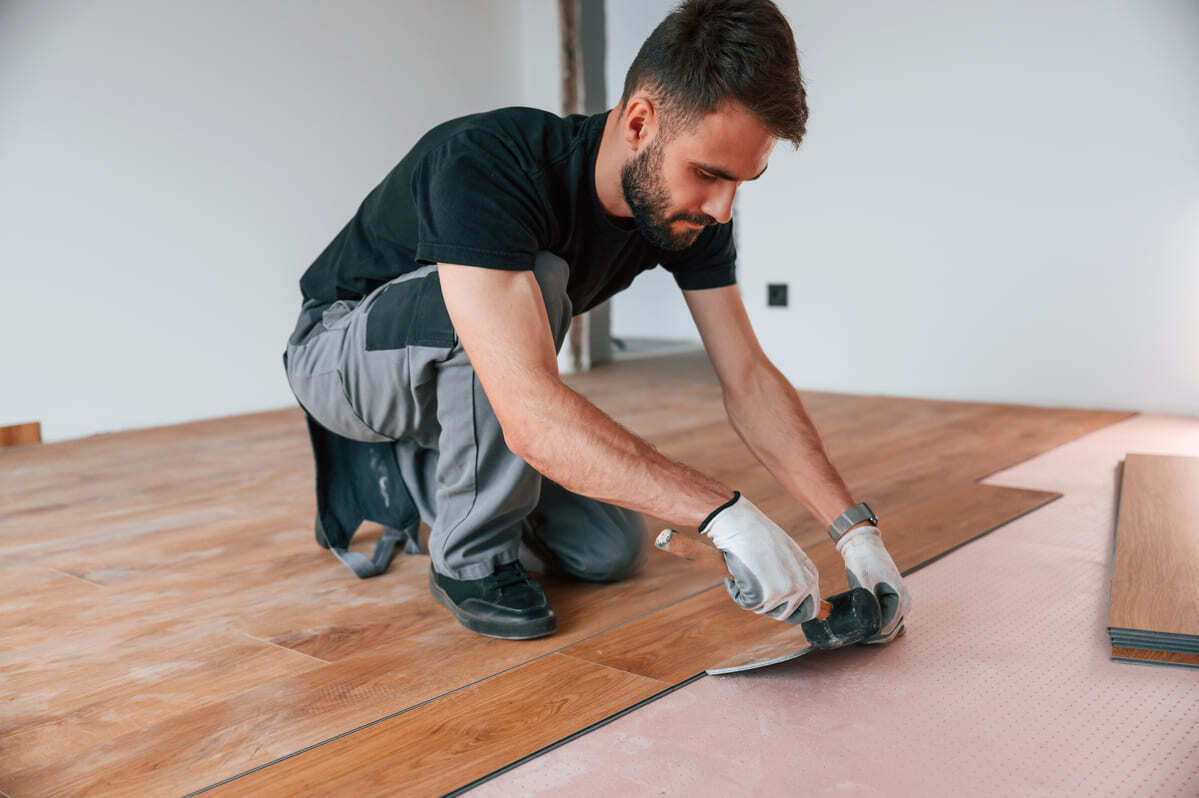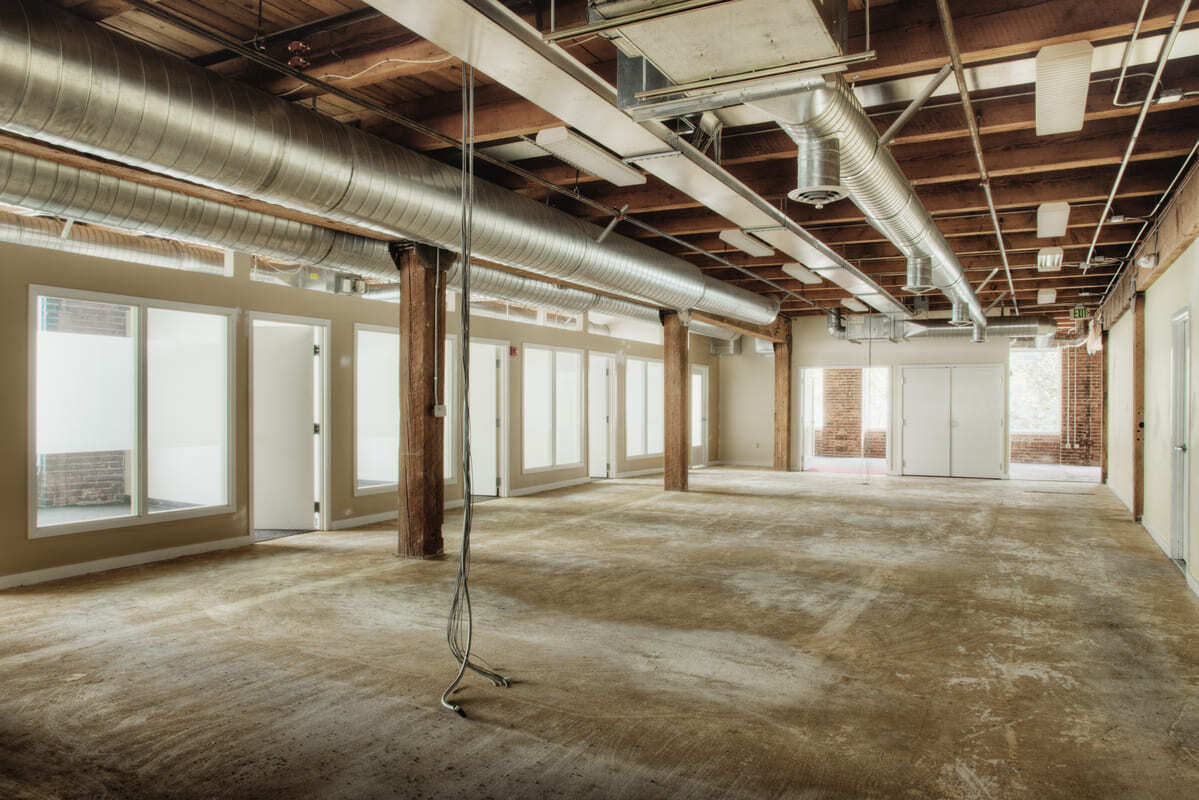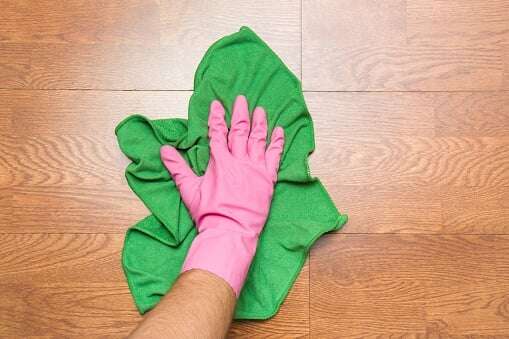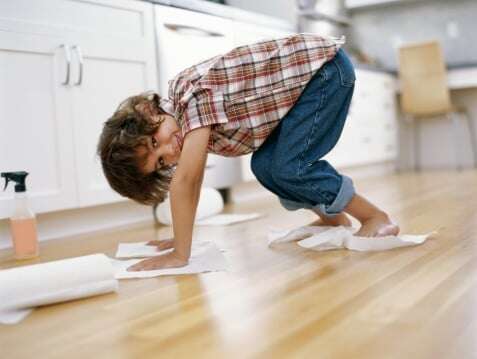It's a safe bet: if the average Chico homeowner were handed a blank check from their favorite home improvement center, he or she would redeem it for new wood floors.
More than any other home amenity, wood flooring conveys warmth, style and easy elegance and complements modern décor as surely as it does homes with traditional furnishings.
Experts in Your Home has installed wood flooring in homes all around Chico – whether or not the homeowner has been handed a blank check. The first decision we ask homeowners to make is whether they prefer solid or engineered flooring. This can be a difficult choice because the flooring is so similar that homeowners really have to “drill down” and consider the advantages and drawbacks of each.
The process is rather enlightening – and can help you, too, if you want to add beauty and charm to your home with new wood floors.
Choosing the Perfect Wood Floors
Choose Between Solid and Engineered Wood
- As its name implies, solid wood flooring consists of strips or planks of hardwood lumber – from top to bottom and from end to end. The wood varies in length, and the width can range from ¼ inch to 1 inch, with ¾ being the most common.
- The wood is delivered to a home unfinished, where it is installed, sanded and finished.
- Engineered wood flooring consists of about three to five layers of wood which are glued together in a cross-grain pattern. Hardwood is placed on top (because it's visible) while softer, less expensive wood (like plywood) makes up the rest of the layers.
- The top layer arrives at a home finished and the rest of the flooring is glued or nailed into place.
Weigh the Advantages of Solid Wood
- The materials are generally less expensive than engineered wood, though the final cost usually “catches up" because the floor must be sanded and finished on-site.
- It's genuine wood and therefore has a rich look.
- Solid wood is highly durable, and it can be resanded and refinished rather easily if it becomes damaged.
- The flooring is easily maintained, requiring little more than regular sweeping (or vacuuming) and a damp-mop treatment.
- The color of some some exotic solid wood deepens and darkens with time and exposure to ultraviolet light.
- Homeowners can choose the number of coatings as well as the sheen level.
- Flaws in the subfloor, especially with regard to variations in height, can be hidden.
Weigh the Drawbacks of Solid Wood
- Installation can be disruptive – dusty, noisy and smelly (when the final finish is applied). Many homeowners prefer to be away from home until the job is done.
- Solid Wood is not recommended for rooms with a high moisture content, especially bathrooms, basements or rooms on top of concrete slabs. To prevent warping, special care should be taken in kitchens to clean up spills promptly and cover high-traffic walkways and work areas with throw rugs.
Weigh the Advantages of Engineered Wood
- The genuine hardwood top layer exudes the same rich, good looks of solid wood flooring.
- Engineered wood resists expansion and contraction caused by changes in temperature and moisture, making it more stable than solid wood.
- The added stability means that engineered flooring can be installed virtually anywhere, including right over concrete.
- Engineered wood is highly durable and easily maintained.
- Installation makes less mess and takes less time than solid wood flooring.
- Environmentalists often prefer engineered flooring because only the top layer consists of actual hardwood.
Weigh the Drawbacks of Engineered Wood
- The materials are generally more expensive than for solid wood, but the final cost often evens out because with no sanding or finishing required, the flooring is secured with glue or nails.
- The pre-finished nature of the top layer means that choices may be limited to what the manufacturer offers.
- Repairs can be more difficult since entire sections of the floor may need to be replaced.
- Any flaws in the subfloor can be tricky to conceal.
- A prefinished floor can be sanded and refinished only two or three times before it must be replaced. (A solid wood floor has no such limitations.)
Nothing compares to seeing (and feeling) solid wood and engineered wood for yourself. To make a fully informed choice, call Experts in Your Home and make an appointment for a flooring consultation. We'll hope that you were handed one of those blank checks, but we'll help you add beauty and charm to your home with wood flooring either way.
Tips for Taking Care of Your Wood Floors
Daily Floor Care Maintenance Is Important
- Use a microfiber mop, soft-bristle broom or vacuum with soft attachment to remove crumbs, dust and dirt. They look harmless and are tempting to ignore, but stepping on them repeatedly would be like rubbing the floor with a sheet of sandpaper. The finish will slowly deteriorate over time.
- Wipe up spills immediately. Liquid is the No. 2 enemy of wood flooring.
- Clean sticky or gummy spills with a damp sponge or towel.
Make Time for Weekly (or As-Needed) Cleaning
- Follow the manufacturer's instructions before using a mild dish soap or a commercial wood floor cleanser. Failing to do so could void your floor care warranty.
- Dip a soft mop into a bucket with a cleanser; wring out the mop; and work in small sections as you swish the mop over the floor in the direction of the grain. For extra shine, or to remove a film caused by the use of too much cleanser, go over the floor with damp rag.
- Remove scuff marks by sprinkling a little baking soda on a damp sponge and wiping the floor.
- Remove tough stains such as glue, gum and tar by covering the stain with peanut butter and allowing the natural oil to break down the stain before removing it with a damp rag. Or press several ice cubes over the stain with a rag and leave it there for at least 10 minutes so the stain can melt and be lifted away.
Exercise Good Floor Care Habits
- Trap dirt, absorb spills and prevent scratches by placing throw rugs at doors and work areas and runners along walkways and high-traffic areas.
- Place felt protectors on the legs of tables, chairs and stools to prevent scuffs and scratches.
- Keep your pet’s nails trimmed so that they don't damage your wood floor.
- Shield your wood floor from the sun's harmful ultraviolet rays by hanging sun-blocking window treatments.
- Run a humidifier during cool weather to prevent shrinkage and warping. Aim for an indoor humidity level of between 35 and 55 percent.
Avoid Bad Habits that Can Harm Your Floor
- Avoid rubber-backed rugs, which can literally peel away the finish of wood flooring.
- Never use scratchy steel wool, scouring pads or scouring powders on wood floors.
- Never use products containing ammonia, lemon, citrus, silicon or tung oil on wood floors.
- Avoid walking on wood floors with sharp high heels or sports cleats.
- Never slide heavy objects across a wood floor. Pick up these objects and move them instead.
How to Properly Clean Wood Floors
Identify your floor type
There are four basic types of wood flooring:
- Surface-sealed wood floors are sealed with polyacrylic, urethane or polyurethane. This type of wood floor is most resistant to stains and water – though only to a point, so be careful not to get carried away with that soap and water.
- Penetrating-seal-treated and oil-treated wood floors feature a seal that soaks into the wood grain and hardens. This type of wood floor must be pampered with a liquid or paste wax.
- Lacquered, shellacked and varnished wood floors generally are not as resistant to stains and water as other surface-sealed wood floors.
Untreated wood floors
If you're uncertain about which type of wood floor you have:
- Consult the manufacturer's instructions that accompanied your wood floor.
- Rub your finger across the floor. If no smudge appears, your wood floor probably is surface-sealed. If a smudge does appear, your wood floor probably has been sealed with lacquer, shellac or varnish.
- Call the floor care specialists at Experts In Your Home so we can inspect your floor.
Remain vigilant about dirt
No matter which type of floor you have, basic care begins with keeping the floor as clean as possible. As Experts In Your Home pointed out previously in this article, two cleaning tools are vital:
- A dry microfiber mop or a high quality, soft-bristle broom
- A vacuum without a beater bar
Use the mop or broom every day and the vacuum at least once a week to remove dirt, dust and food particles between floor boards. These elements pose the greatest threat to your wood floor since they act like sandpaper particles in scratching and gradually degrading the finish of a wood floor.
Follow the manufacturer's advice
If you also strategically place area rugs and runners in high-traffic areas, you might have to get down on your hands and knees and clean your wood floor with a damp cloth only periodically. You'll know when your floor could benefit from a more thorough cleaning. This is when knowing which type of wood floor you have is vital. As the Wood Floor Covering Association warns:
- “Hardwood flooring manufacturers of prefinished wood floors have specific recommended cleaning products for maintaining the wood floor's finish. It is best to use their recommended cleaning products and follow their instructions so you do not void your warranties.”
The specific instructions may vary somewhat but generally follow a similar pattern once you have the recommended cleaning product in hand:
- Dip a mop into a bucket with the cleaning product.
- Wring it out completely, remembering that water is the worst enemy of wood (even sealed wood).
- Mop in the direction of the wood grain.
- Empty the bucket when the solution becomes dirty and replenish it.
- Go over the entire floor with a damp (meaning moist-only) rag.
How to Keep Your Wood Floors Looking Like New
Take Preventative Steps
- Place throw rugs at doors and runners along high-traffic areas to track dirt and prevent scratching. Kitchen rugs near the sink and dishwasher can help absorb water spills, which can corrode wood floors. Avoid rubber-backed products because they can damage wood flooring, the Wood Floor Covering Association says. Shake out or vacuum the rugs and runners regularly to keep them clean.
- Put stick-on felt protectors under the legs of furniture to prevent scratching and scuffing. Replace the protectors periodically since embedded dirt can create a “sandpaper effect” that can mar a wood floor.
- Be mindful that direct sunlight can cause your wood floor to fade and even splinter. Depending on your home's exposure, consider protective window treatments and rearrange rugs and furniture periodically to help your floor age consistently.
- Run a humidifier during cooler weather to prevent wood shrinkage and warping. Try to keep your indoor humidity level between 35 and 55 percent.
Take Proactive Cleaning Steps
- We'll use this section to remind you that those cleaning tips and steps mentioned previously in this article shouldn't be ignored - especially having the right tools and the keeping on top of dirt and crumbs before they wear down your floor's surface.
- Also, don't forget to clean up spills as fast as you can to avoid damaging your wood flooring with liquids.
Take Avoidance Steps
- Avoid walking on wood floors with sharp high heels or sports cleats. Even a 125-pound woman wearing high heels can exert up to 8,000 pounds of pressure on a wood floor, potentially resulting in dents, says the National Wood Flooring Association.
- Keep your pet’s nails trimmed and their paws clean.
- Pick up and move, rather than slide, heavy furniture across wood floors to avoid making scratches and dings.
Need Help? Contact a Home Flooring Expert
If you are considering putting in new wood flooring you can contact us for a free quote by calling (530) 924-5220.









